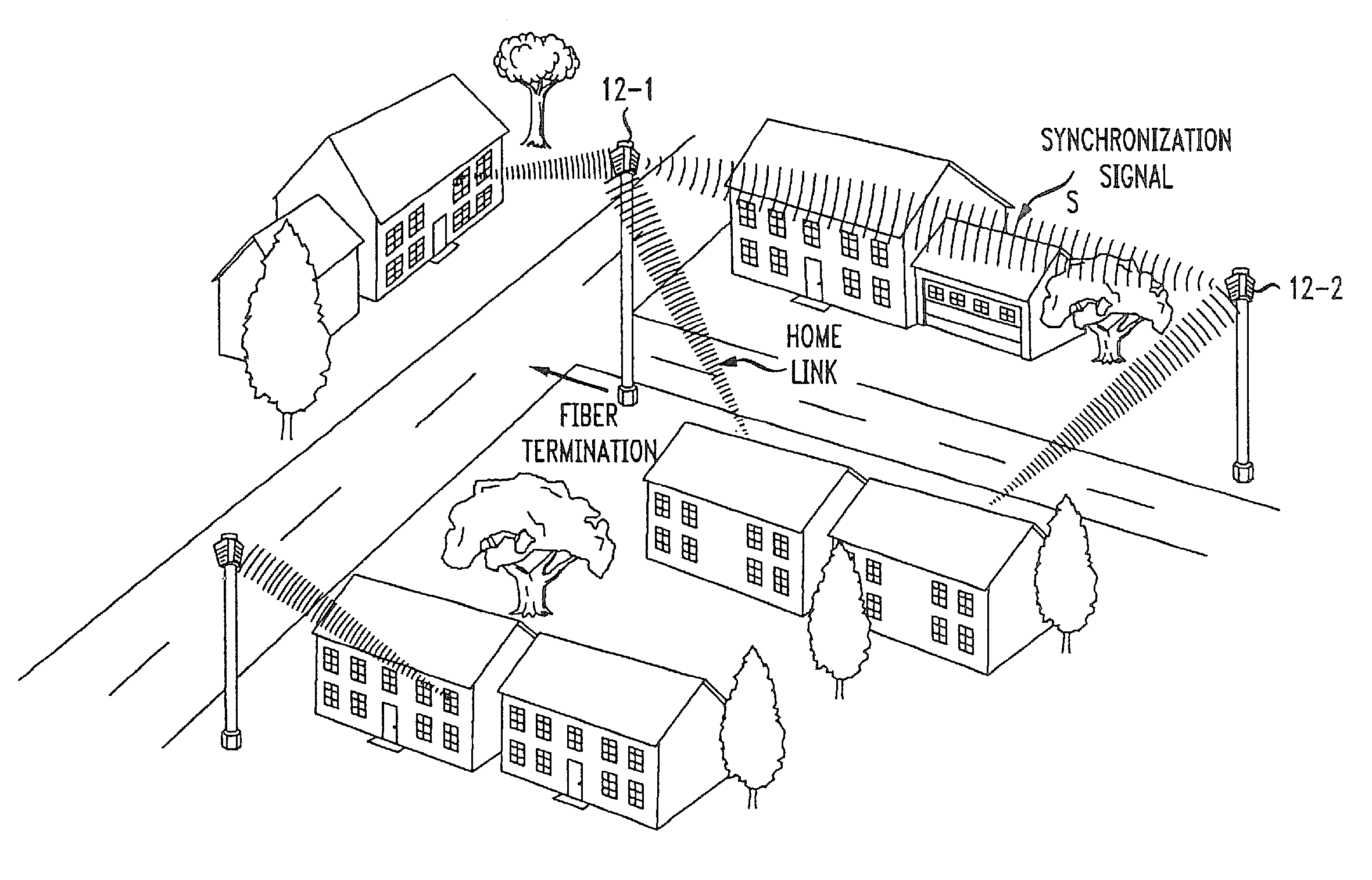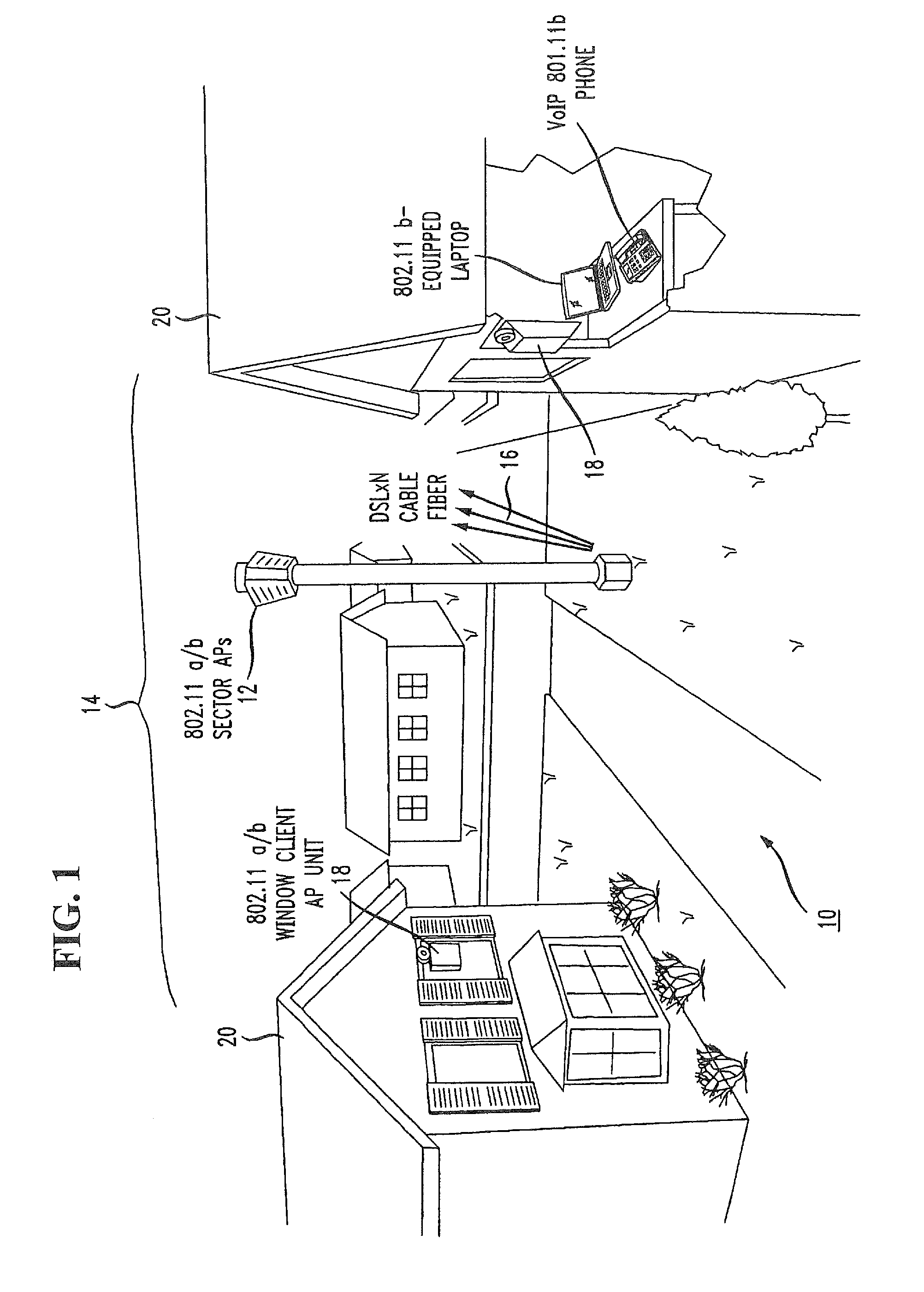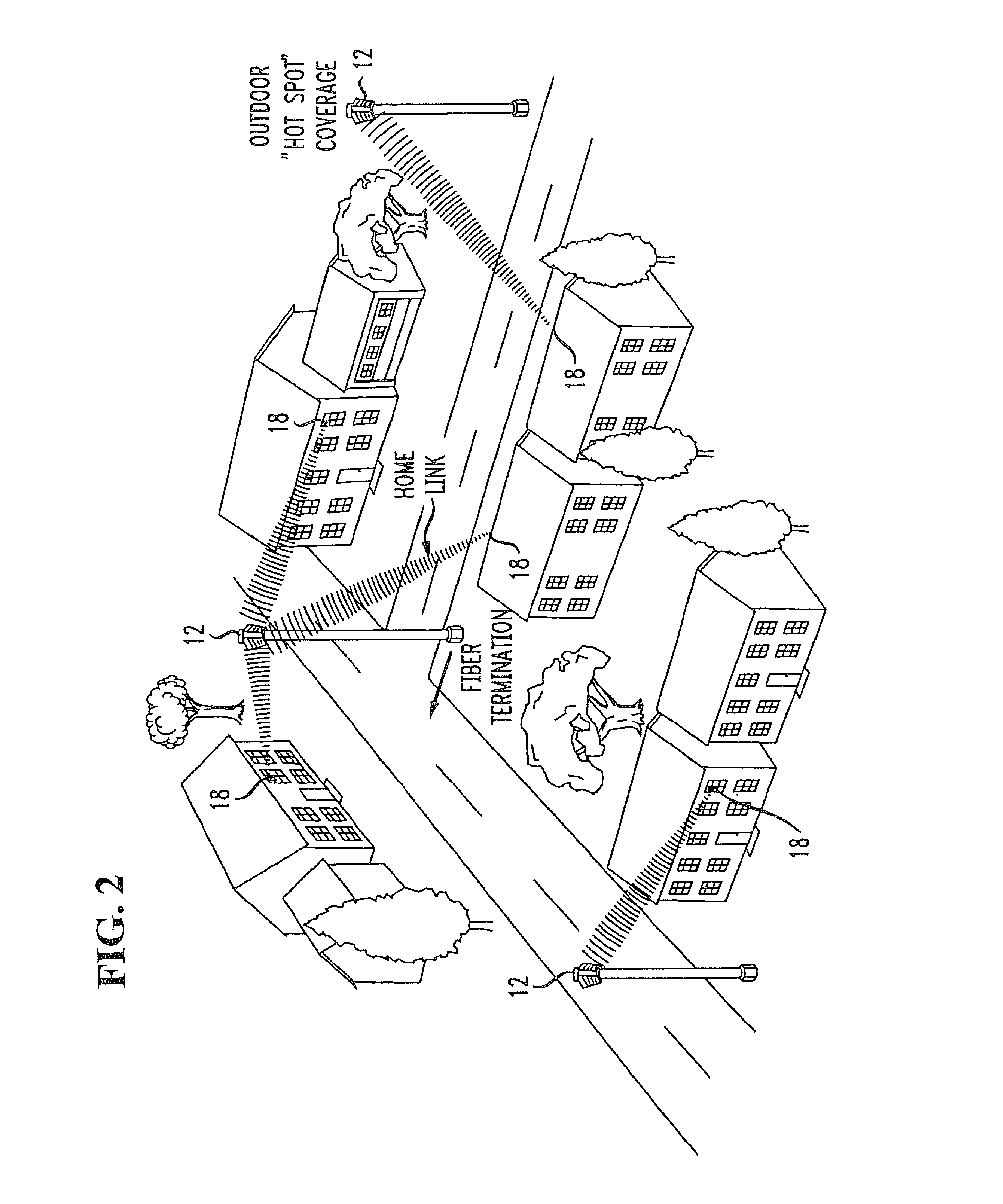Two-tier wireless broadband access network
a wireless broadband and access network technology, applied in the field of wireless access networks, can solve the problems of increasing the packet error rate, limiting the quality, and insufficient number of channel frequencies available to allow each cell, and achieve the effect of optimizing the quality of the concatenated network connection and easy installation
- Summary
- Abstract
- Description
- Claims
- Application Information
AI Technical Summary
Benefits of technology
Problems solved by technology
Method used
Image
Examples
Embodiment Construction
[0026]FIG. 1 illustrates an exemplary arrangement 10 for implementing the two-tier wireless broadband access system of the present invention. As shown, arrangement 10 includes a Neighborhood Area Network (NAN) access point (AP) 12 which is (preferably) centrally disposed within a nanocell 14, the nanocell itself composed of multiple sectors defined by separate APs and associated directional antennas. Each sector is capable of transmitting / receiving relatively low power signals (compatible with license-free operation) with AP 12. For example, each AP 12 may “illuminate” a segment area covering a radius of 1000 feet (or less). In a typical neighborhood, therefore, a single wireless AP 12 may communication with a relatively few houses (or buildings). FIG. 2 contains a simple diagram of an exemplary residential setting in which a plurality of NAN APs 12 are used to provide communication within a neighborhood.
[0027]Wireless AP 12, as shown in FIG. 1, can be installed within a device simi...
PUM
 Login to View More
Login to View More Abstract
Description
Claims
Application Information
 Login to View More
Login to View More - R&D
- Intellectual Property
- Life Sciences
- Materials
- Tech Scout
- Unparalleled Data Quality
- Higher Quality Content
- 60% Fewer Hallucinations
Browse by: Latest US Patents, China's latest patents, Technical Efficacy Thesaurus, Application Domain, Technology Topic, Popular Technical Reports.
© 2025 PatSnap. All rights reserved.Legal|Privacy policy|Modern Slavery Act Transparency Statement|Sitemap|About US| Contact US: help@patsnap.com



